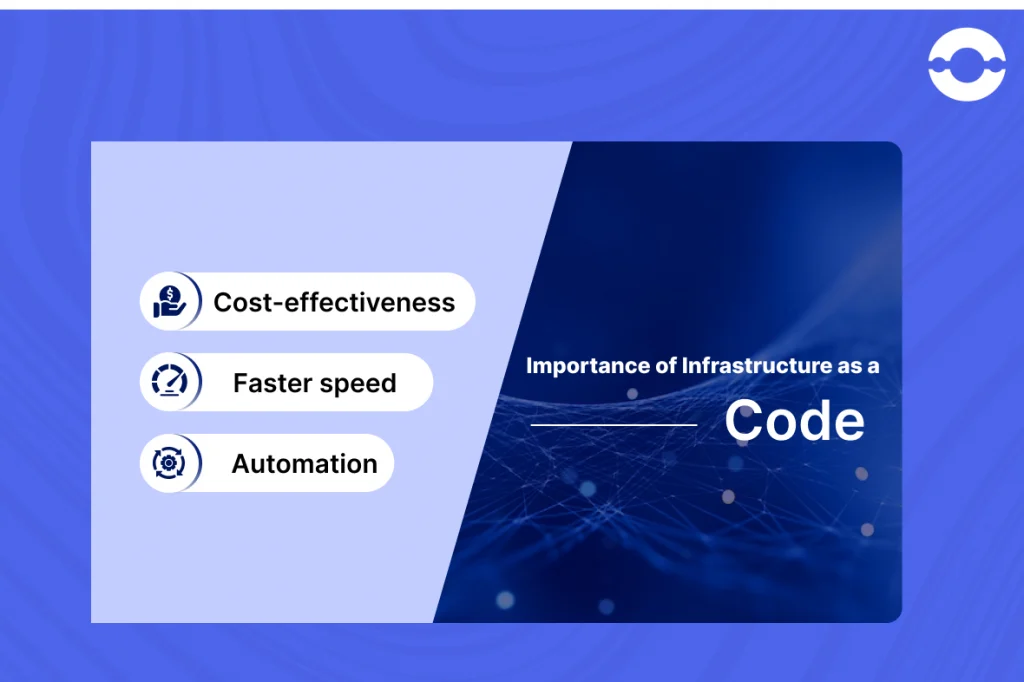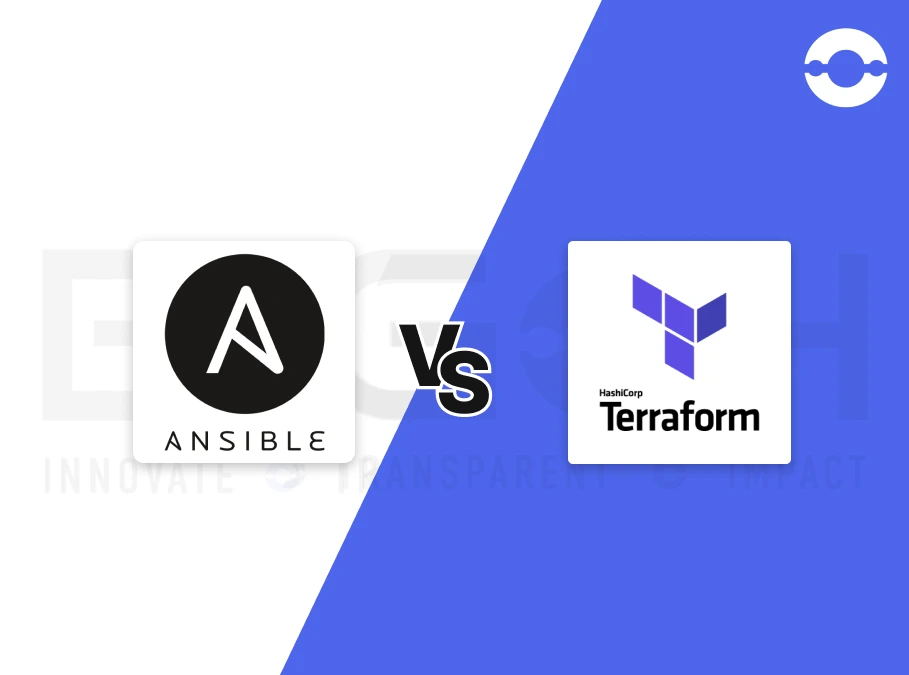
As you know that software processes are becoming more complex these days, and so Developers need to find innovative ways to deal with such technologies. Earlier, companies used to rely on manual software processes in setting up and upgrading infrastructure which lead to delays, errors, and inconsistencies.
So, In this guide, we will let you know about what Infrastructure as a code is, its importance along with underlying benefits.
What is Infrastructure as a Code?
In the past, developers created the app and deployed it on the server; they needed to perform the following tasks:
- Set up servers
- Configure networking
- Create route tables
- Install software
- Install database
The system administrator ran these things manually earlier, resulting in high human resource costs, increased chances of human errors, and increased maintenance expenses.
Now, developers can automate all the tasks end to end by packing the knowledge and expertise of system administrators into various apps that carry out all these tasks. All thanks to Infrastructure as a code!
Infrastructure as a code makes the software development process more efficient and reliable by managing IT infrastructure through automation.
In the case of Infrastructure as a code, developers can use the script and throw it away to automate IT-related tasks.
So, developers need not worry about managing servers, storage, and operating systems. Administrators need not take the headache of performing manual configuration steps for managing data infrastructure.
IAC enables the developers to manage cloud infrastructure using a simple text-based template as to what they want to deploy, and Infrastructure as a code would do the job for them.
Earlier, IT administrators physically put the servers in place and configured them. Developers can deploy applications after machines have been configured to the right settings.
Additionally, doing manual processes would be slower than having automated IT processes, which will, in turn, leave the application unavailable for users for a longer time span. Hence, the churn rate would increase.
Infrastructure is a code is there for adopting best practices of DevOps, such as continuous monitoring, version control, etc., to manage your IT infrastructure.
Why is Infrastructure as a Code Important?

DevOps philosophy is about a shared culture where the development and operations team work together in a loop ranging from design to production and finally deployment. Infrastructure as a code enables the developers to use unified practices and tools to deliver applications.
1. Faster Speed
The goal of IAC is to eliminate mundane yet manual tasks and start adopting a code-based approach.
An organization’s employees need not wait for IT personnel to complete the tasks when automating setup and configurations, Infrastructure as a code is a game changer for businesses.
Here, developers run a code or a script to set up Infrastructure for various environments such as production, development, testing, etc. Thus, it enables businesses to deliver new features and services to their customers faster.
2. Automation
Infrastructure as a code helps developers to automate deployments and manage Infrastructure. Doing automation helps to reduce the likelihood of human errors.
Also, implementing Infrastructure as a code could be a lifesaver option for businesses when experienced engineers leave your company, and you don’t know how to manage and set up Infrastructure.
3. Cost-Effectiveness
Infrastructure as a code can save the cost of businesses as they need not worry about hiring more human resources because the cost incurred on hiring the employee is substantially high.
By automating IT processes, employees can shift their focus from mundane tasks to performing mission-critical projects.
Hence, businesses can reduce their infrastructure costs by automating resource allocation and paying for needed resources.
Read Also: DevOps Best Practices

Benefits of Infrastructure as a Code

1. It Saves Time and Money
Infrastructure as a code is an important part of DevOps as it eliminates manual processes through automation.
IAC follows an automated approach by taking cloud computing to the next level. It allows the developers to eliminate manual processes involved in the software development process.
Not only this, but Infrastructure as a code also proves to be advantageous for developers as they can focus on performing high-quality tasks, increasing an organization’s productivity.
2. Ensures Consistency and Accountability
Manual processes result in mistakes because humans are always flawed edition. Infrastructure as a code guarantees that the same configurations will be repeatedly deployed without discrepancies.
Developers can see different versions of the source code file to have full traceability of changes. It becomes easy to find who did what and when. There is no guessing work behind that.
Hence, Infrastructure as a code standardizes the IT infrastructure, so there are lower chances of errors, and therefore your applications will run smoothly.
3. Increased Efficiency in Software Development Processes
IAC brings more efficiency to software development processes as developers can focus on developing applications without worrying about managing Infrastructure.
For instance – Cloud architectures can be deployed in several stages as, a sandbox environment that can be set up wherein developers can write code in isolation, Q/A specialists can test the code by creating a copy of the production environment, and finally, the app will be deployed to the production stage.
4. Boosts Productivity
Infrastructure as a code improves the productivity of an organization as infrastructure as a code can be reused across multiple environments, reducing the need to write code repeatedly for deployment.
Additionally, it automates the deployment and managing of IT infrastructure, reducing the time and effort required to perform tasks manually, cutting the cost of onboarding employees, and redirecting talented IT folks to perform important business operations.
5. IAC Tools

a. Ansible
Ansible is an infrastructure as a code tool used for configuration management. It was introduced in the year 2015 by red hat. This tool uses YAML templates popularly known as playbooks, allowing users to automate repetitive tasks. Ansible is used for the following things:
- It is used to automate IT setup
- It is used for managing configurations
- It is used to automate deployments in different environments, thus speeding up your team’s operations efficiency.
Here are the benefits of Ansible
- Ansible uses an agentless architecture, meaning agents are not required to be installed to manage the remote system.
- It is written in Python, commonly used for administration and scripting tasks. It becomes easy for engineers to work with this as they are well-versed in this language.
- Ansible has a low learning curve, so it becomes easy for beginners to learn the workflow and logic of its operations.
- It has strong community support from developers, which allows fellow developers to learn this IAC as a tool using available online tutorials and resources.
Here are the cons of Ansible
- Ansible is primarily designed for Unix-based operating systems with limited Windows support. Though it can be compatible with Windows, it requires additional setup and configuration.
- This tool could not be a handy tool for dealing with large-scale deployments, especially in scenarios of large-scale network traffic so it may bring performance issues.
- It does not have large community support from developers as it is new to the market and is not famous, unlike other competitive tools such as Chef, Puppet, etc.
b. Terraform
Terraform is an open-source infrastructure as a code tool enabling developers to manage infrastructure resources, including servers, storage, and networks. This IAC tool is used to automate and manage Infrastructure and platforms.
It uses a declarative approach wherein developers don’t have to define how automation is done. Terraform tool will figure it how to execute and manage IT tasks.
In a nutshell, terraform is used for provisioning infrastructure and setting up Infrastructure for projects.
Here are the pros of Terraform
- Terraform IAC tool supports various cloud platforms such as google cloud platform, AWS, and Azure for managing Infrastructure.
- Terraform tools can be integrated with various DevOps tools such as Ansible, Jenkins, etc.
- Terraform tool is highly suited for managing small- and large-scale deployments.
Here are the cons of Terraform
- Terraform tool requires dependencies to manage infrastructure resources, adding complexity and compatibility issues.
- As it is a new IAC tool, many updates are going on.
- It offers limited flexibility in terms of cloud customization as well as providing limited resources for building and managing cloud infrastructure.
How BigOhTech Helps in IAC?
At BigOhTech, we provide an experienced DevOps team who uses various infrastructure automation and management tools such as Ansible and Terraform to help enterprises and unicorn brands manage and set up their Infrastructure.
Infrastructure monitoring tools would help you to set up Infrastructure in different environments and deploy applications on the go with just a single click of a button.
Thereby, Big Oh tech strives to help your organization to standardize your IT infrastructure, brings more efficiency to software development processes and improves the productivity of an organization.
Wrapping Up
Now, you might get a quick idea about how you can utilize Infrastructure as a code tool to increase the efficiency of your development and operations team. If you still have concerns about adopting IAC in DevOps methodology, contact our dedicated Developers now.
Hire our DevOps consulting company
FAQs
Infrastructure as a code supports the DevOps framework by aligning the development and operations teams, as the same deployment process can be used for every environment.
Infrastructure as a code enables the developers to speed up their development and deployment process as they do not have to manually configure and manage Infrastructure because everything is managed programmatically using IAC tools such as Ansible and Terraform
1. Saves time and money
2. Ensures consistency and compatibility
3. Increased efficiency in software development processes
4. Boosts productivity
1. Configuration files
2. Version control system
3. Automation tools
4. Continuous Integration/Continuous Delivery pipeline
Also Read: Logging vs Monitoring vs Tracing




